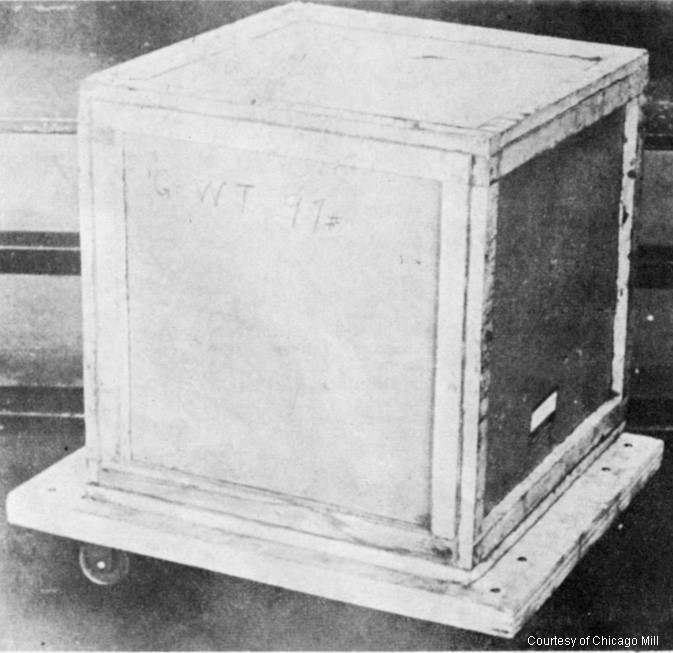History of Chicago Mill in Tallulah
From August 14, 1975 Centennial Edition Madison
Journal
Chicago Mill and Lumber Company, a Delaware corporation,
founded by Herman Paepcke in 1881, with main offices in Chicago, Ill, purchased
the sawmill owned by Kurz Bros. Lumber Company in Tallulah, in the latter part
of 1927. They also purchased extensive timberlands in Madison and adjoining
parishes owned by Hardwood Timber Company, Ayer Timber Company and Singer
Manufacturing Company.
At that time, Walter Paepcke, son of Herman, was
president of the company. Later he left the mill and was instrumental in
founding a ski resort at Sun Valley, Idaho.
In 1928, A. H. Becker from the Helena, Ark. plant was
appointed the first manager of the Tallulah Plant. Other employees, G. L. Aitken, J. A. Joyner, E. M. Jones, L. W. Kessler, Harry
Anderson, and others were transferred from Helena. There was a large logging
operation with a logging camp near Somerset. A railroad hauled logs from that
area to Tallulah. Expansion and renovation work was started immediately, with
the construction of a power plant, box factory and veneer mill.
Since there were large quantities of Virgin timber
available, this made it most suitable for the location of such operations, as
well as an adequate supply of labor and two railroads for shipping finished
products. Especially valuable was the Figured Red Gum veneer. A large quantity of
the lumber produced at that time was exported to England and other foreign
countries.
During the early 1930's the depression came and the company
was taken over by the First National Bank of Chicago. The work force was much
reduced.
R. N. Ware from the Blytheville plant was made manger of
the Tallulah Plant in 1932. The Blytheville plant was closed due to lumber
supply being exhausted. Also coming from Blytheville were J. D. Halbach, Paul
R. Schwartz, S. C. Alexander, Victor Bray, Reginald Cannon, and others.
Box Manufacture was increased and a lumber kiln was installed.
M. B. Christian was hired to fight lyctus beetles in lumber and do experimental work in a
research laboratory.
Hal Moore, a forester, was employed. Ray Radford was in
charge of land sales of cutover land.
An oil well was discovered on Chicago Mill land in Tensas
Parish in 1945. Ten other wells were discovered in 1955, opening up Newlight
and West Newlight Fields.
In 1955 R. N. Ware was appointed Vice-President and
placed in charge of Crude Oil Division, with office in Tallulah. A geologist
from Houston was in charge of development. Land sales were discontinued about
this time.
J. D. Halbach, assistant manager, was promoted to manager
and later J. F. Griswold Jr. of Chicago was made manager. R. N. Ware retired in
1958 and Paul R. Schwartz from Chicago office became Manager of Crude Oil
Division, later being made manager of Tallulah Plant as well. Still later H. K.
McKinnon took over management of Crude
Oil Division.
During World War II the plant operated at full capacity,
making plywood, boxes, and lumber for use in defense. So many of the men
employed were called by Selective Service that women were hired to work in the
box factory, veneer mill and sawmill.
After running at full capacity for several years, the
best timber was cut and it was impossible to secure good grade logs for veneer
and R. N. Ware, M. B. Christian, and Reginald Cannon worked out and patented a
machine and process for making CRAVENEER, a material made of a low grade
veneer, with Kraft paper laminated on each side. This was made in various
thicknesses and used mainly as box material.

Chicago Mill’s first Craveneer
box
A forest management program was initiated by L. C. White,
a forester. It was formerly a practice to cut all timber and then sell cut-over
land. When the forestry program was started, the larger timber was marked for
cutting and the smaller was left to grow, making a perpetual timber supply.
Also a number of Madison Parish farmers were encouraged to start tree farms and
use selective cutting method on logs they sold to the mill. Several other
foresters, E. E. Lewis and others, were added during the 1950's.
Chicago Mill was acquired by a partnership of Jay F. Pritzker of Chicago and Will H. Gonyea
of Eugene, Oregon in 1965, the land being sold to Simon Zunnamon. The Main
Office was moved from Chicago to Greenville, Miss. and J. B. Wiseman of Memphis,
Tenn. was made General Manager.
Robert Rich became manager of the Tallulah Plant and T.
A. Atkinson of Los Angeles was in charge of crude oil. In 1970, the box shop
and veneer mill were closed down, leaving only the sawmill
in operation. Robert Rich transferred to Helena and W. G. Skelton was made
manager at Tallulah.
At present, there are less than 100 employees at Tallulah
Plant and logging is done by contractors. Much of the timberland has been
cleared and is being farmed in soy beans and rice.
At the height of operations, during war years, there were
approximately 800 to 1000 employees in Tallulah plant and woods. Some German
prison labor from the POW camp in Tallulah was used in the woods and on the
lumber yard.
At various times, approximately 40 percent of the
working people in Tallulah have worked at Chicago Mill.